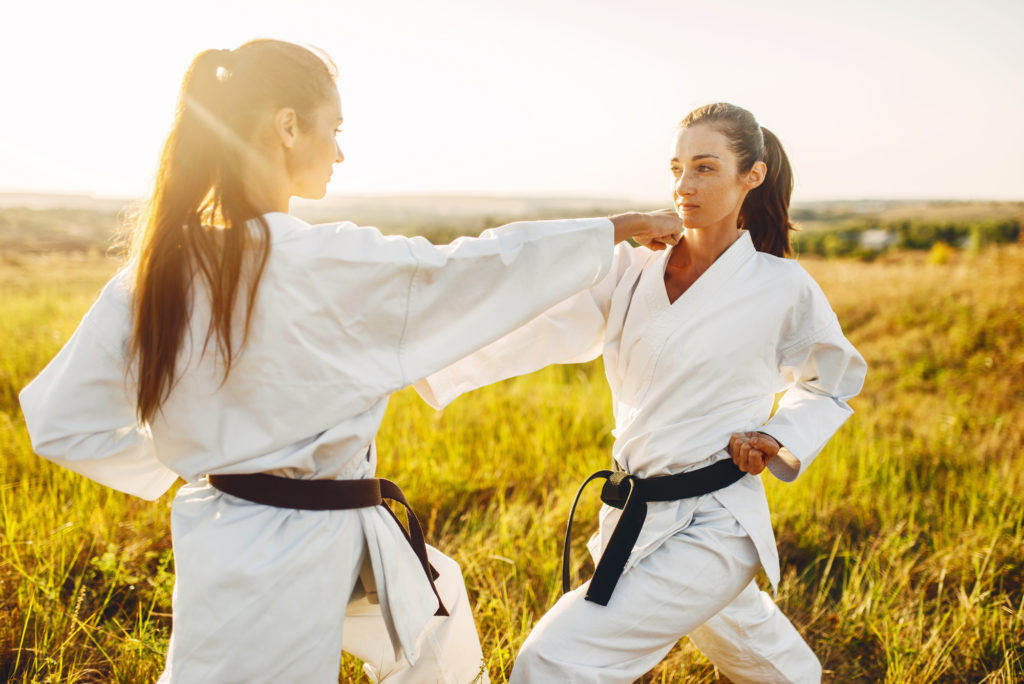An Insight into the Art of Empty Hands
Karate, a martial art that originated from the Ryukyu Kingdom in Japan, has come a long way from its days of origin. It’s often recognized by its powerful fist techniques which are not only a hallmark of the martial art but also an essential part of the Karateka’s (Karate practitioner’s) arsenal. Karate fist techniques emphasize striking with accuracy, power, and efficiency. This article will delve into the details of these techniques, shedding light on their application, intricacies, and the philosophies that guide their execution.
The Formation of a Karate Fist
In Karate, the correct formation of a fist is crucial. A proper Karate fist starts with the fingers tightly closed, beginning with the little finger, followed by the rest of the fingers, and finally, the thumb is wrapped tightly over the second and third fingers. This formation ensures that the striking surface, the knuckles of the first two fingers, is in the same line with the forearm, providing stability and reducing the risk of injuries.
Different Types of Fist Strikes
Karate offers an assortment of fist techniques, each suited to different situations and targets. Here are some notable examples:
- Seiken Tsuki (Punch): Often simply referred to as “Tsuki” or “Punch”, this is the basic karate punch. The Seiken Tsuki is executed by extending the arm straight forward and striking with the first two knuckles of the fist. The wrist must be straight to prevent injury, and the non-punching hand is drawn back to the hip. This punch can be directed at the head (Jodan), body (Chudan), or lower body (Gedan).
- Uraken (Backfist Strike): This technique involves whipping the back of the fist quickly towards an opponent. It is often used to strike the face, particularly the temple, or to set up another strike.
- Tettsui (Hammer Fist): The fist is clenched in the same way as the Seiken Tsuki, but the blow is delivered with the side of the fist, resembling the action of hammering a nail. It’s typically used for strikes to the side of the head, collarbone, or body.
- Empi (Elbow Strike): Although technically not a “fist” strike, the elbow strike is a close-quarters strike using the forearm’s elbow and is an important part of the Karate striking arsenal. It can be delivered in many different directions, including forward, upward, downward, and to the rear.
- Oi-Zuki (Lunge Punch): This is a long distance punch, in which the karateka steps forward into a front stance (zenkutsu-dachi) while delivering a punch. This punch combines the body’s forward momentum with the arm’s extension to deliver a powerful blow.
- Gyaku-Zuki (Reverse Punch): This punch is performed with the rear hand, opposite to the front foot in a fighting stance. The power of Gyaku-Zuki comes from the twist of the hips, making it one of the strongest punches in Karate.
- Kagi-Zuki (Hook Punch): This punch is similar to a hook in boxing. It’s a circular punch delivered at close range, aiming for the side of the opponent’s head or body.
- Mawashi-Zuki (Roundhouse Punch): This punch involves rotating the whole body to deliver a punch in a roundhouse fashion. It can be aimed at the head, body, or even lower targets.
- Heiko-Zuki (Parallel Punch): This technique involves two simultaneous punches, usually directed at the opponent’s midsection. It’s commonly used as a follow-up to a successful block.
- Furi-Zuki (Swinging Punch): In this technique, the punch is delivered in a wide swinging arc, allowing for a powerful strike. It’s typically used against an opponent’s head.
- Age-Zuki (Rising Punch): This punch is delivered in an upward motion, typically targeting the opponent’s chin or underside. The punch’s trajectory makes it useful in close-quarters combat.
- Yama-Zuki (Mountain Punch): This is a double punch with both fists simultaneously. One punch is high (aimed at the face) and the other is low (aimed at the midsection), resembling the shape of a mountain.
- Nihon Nukite (Two Finger Strike): While not a traditional “fist” strike, this technique uses two extended fingers to strike vulnerable areas like the eyes or throat. It requires excellent precision and control to avoid injury.
- Shuto Uchi (Knife Hand Strike): Also known as a ‘karate chop,’ this open-handed technique strikes with the side of the hand. While not technically a fist technique, it’s a very common strike in Karate.
- Morote-Zuki (Augmented Punch): In this punch, the non-punching hand supports the punching hand, adding power to the strike. This is often used in stationary practices or kata but is less common in sparring due to its lack of reach.
- Hasami-Zuki (Scissor Punch): This is a combination technique where punches are thrown simultaneously to the sides, usually aimed at two opponents standing on either side of the practitioner.
- Haito Uchi (Ridge Hand Strike): This technique involves striking with the inner edge of the hand (the ‘ridge’ along the index finger). It is similar to the Shuto Uchi but used in different situations.
- Koken Uchi (Wrist Joint Strike): This technique involves striking with the wrist joint. It is typically used in a sweeping motion to strike an opponent’s temple or jaw.
- Shotei Uchi (Palm Heel Strike): This technique uses the heel of the palm to strike an opponent. It’s typically aimed at the chin, nose, or solar plexus.
- Ippon Ken (One Knuckle Punch): This technique uses the knuckle of the index or middle finger to deliver a precise punch. It’s often aimed at vital points and requires advanced hand conditioning.
- Nukite (Spear Hand Strike): This technique involves extending all fingers straight and striking with the fingertips. It requires significant hand conditioning and is typically aimed at soft, vital areas on the body.
- Keiko (Chicken Beak Fist): This is a specific hand shape where fingers are partially curled and held together, striking with the knuckles. This technique is used in Okinawan Karate and is aimed at specific pressure points.
- Ippon Nukite (One Finger Strike): A very advanced technique that strikes with only one extended finger. Extreme precision and conditioning are required for this technique.
- Shotei Otoshi (Dropping Palm Heel Strike): A technique that utilizes gravity and body weight, dropping down onto an opponent with a Shotei Uchi (Palm Heel Strike).
Basic Principles and Concepts in Fist Techniques
A core principle in Karate fist techniques is ‘Kime’, which is the idea of focus. The Karateka aims to concentrate all their power into a single point at the moment of impact. Kime is often achieved through a combination of hip rotation, body alignment, and the rapid contraction and relaxation of muscles. This principle embodies the philosophy of maximum efficiency in Karate.
Another important concept in Karate is ‘Zanshin’, or remaining mind. After a strike, a Karateka should remain in a state of awareness, ready to respond to any counter-attacks. This mindset encourages practitioners to maintain a balance between offence and defence, which is crucial in any martial art.
The Importance of Kata in Karate Fist Techniques
Kata, a sequence of set moves, is an essential part of Karate training. It allows the practitioner to drill various fist techniques repeatedly, helping to embed the movements in muscle memory. Each Kata is a choreographed pattern of movements, embodying different techniques, including various punches, strikes, and blocks. Practicing Kata aids in mastering the techniques and understanding their practical application in different scenarios.


